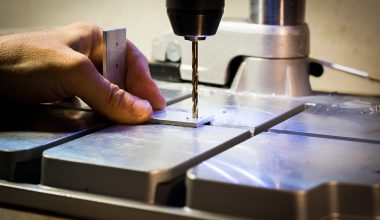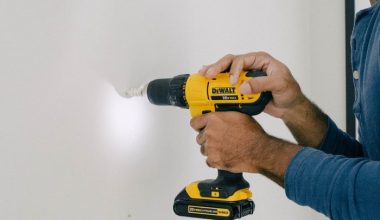Power miter saws have a wide variety of uses in carpentry, including cutting trim work, moulding, rafters and much more. It is this versatility that makes them a very important tool for professionals and DIYers alike.
Miter saws come with a variety of functions and different sizes, so make sure you choose one that suits your needs.
Here we will teach you how to use a miter saw, plus a few helpful tips to make sure you are safe and get the best results.
Setup and Safety
First of all, it is important to consider these safety options when setting up and using either a sliding or non-sliding miter saw.
Make sure to always wear ear and eye protection when operating or assisting someone with cutting equipment.
Don’t wear gloves, jewelry, or loose clothing when operating a miter saw as these can get caught up in the blade. This also includes tying up long hair to make sure it doesn’t get in the way. If a loose item gets caught in the blade it will quickly pull you into the cutting path. It is good practice to be vigilant with your safety measures throughout your workshop and always worth giving advice to others.
Check and Check again
Make sure the top and bottom blade guards are in place and operating as they should be. Check that as you lower the blade the bottom blade guard moves out of the way.
Never cut very small pieces and always support longer pieces of material along their full length. This is so that the pieces don’t snap up or move after cutting.
Make sure you keep hands and fingers clear of the cutting area. There are often clear safety guides to help you see when you are too close, if not keep at least 6 inches from the blade.
After finishing a cut make sure the blade comes to a complete stop before removing the material or adjusting the blade. This may be assisted by an electric brake in some saws, but don’t rely on this.
Clean cuts are the aim
A miter saw is a fantastic tool for making clean cuts with repeatability and high accuracy. But it takes practice and skill to get the best results.
Top cutting tips:
- Have a firm grip and a steady hand
- Measure your lumber twice, cut once and reduce waste
- Keep your work area clear of debris and sawdust
- Support your material along its full length
- Check the depth of your cut before cutting
- Make sure your piece is flat against the fence
- Check your blade for damage
- Use a sacrificial block for cutting small lumber
Different types of cuts from a miter saw
Miter saws are great for the workshop as they are able to be used for many different applications. The standard uses are cutting crown molding, trim works and 2 x 12 lumber pieces. They specialize in creating cuts at angles, such as miter, bevel and compound miter cuts.
How to make a crosscut
A crosscut is the most basic of all cuts and one that all miter saws should easily complete. Place your material onto your miter saw table. Align your cutting mark with the blade or laser if applicable. Gently lower the blade while off to the material to check alignment. Check again that your material is fully secured along its length.
With your hands clear, squeeze the trigger to turn on your miter saw and in a smooth and controlled motion lower the cutting blade. After passing through the material release the trigger and allow the blade to lift back up and stop before moving your two pieces. If you are finding you need to cut wider pieces of lumber check out a sliding miter saw. Using rails to move the saw blade they can make crosscuts of up to 18-inches.
Making a miter cut
A miter cut is similar to a crosscut, however at an angle rather than straight. This is achieved by rotating the table to cut through your lumber, whilst keeping the saw blade 90 degrees to the material surface. After marking your material move to your miter saw and adjust the table to the correct angle. This is often assisted by positive stops to help with common alignments.
Now place your material onto the table and check it is aligned correctly with the blade. As before with a crosscut, lower the blade to confirm cut alignment before smoothly cutting through your material. Using a miter cut you can create joins for window or door frames.
How to make a bevel cut
A bevel cut is also at an angle however it is made by twisting the blade rather than rotating the table. Once again mark your cut on your material or lumber and determine the required angle. If joining trim or molding this will often be 45 degrees. Then rotate your blade, again with helpful detents for the most common positions.
Align your lumber with the blade. Don’t forget that the blade isn’t cutting directly down but at an angle so make sure to keep hands and loose objects clear. Carefully make your cut to avoid kickbacks. Hopefully we have helped you understand the differences between miter saw cuts. Don’t forget to always leave your saw clean and unplugged after finishing a job.






